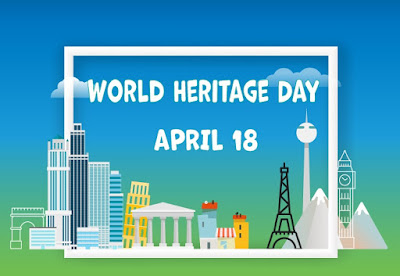 |
| A bride and groom in a tap dance at their wedding ceremony (Source) |
Printable coloring pages for kids and adults, worksheets for kindergarten kids, preschoolers and low grades on many different topics, games and exercises on many subjects, mandalas, hobbies, gifts, greeting cards, animations and glitters, health and good life tips, beautiful and moving stories and sentences.
Tap Dance Day - May 25
Museum Day- May 18
Museum Day is a day where you should soak up culture and art and visit any museum, no matter which one.
This day has been declared by the International Council of Museums as a day dedicated entirely to museums, on May 18 each year.
Each year, the council dedicates a particular theme to Museum Day, and many museums around the world hold special days on the subject. More than 30,000 museums around the world participate in Museum Day, a day founded in 1977.
Opera Day - February 8
 |
| Sydney Opera House at night, one of the most famous opera halls in the world |
 |
| A picture from the modern opera musical "Phantom of the Opera" by Andrew Lloyd Weber, from 1986 |
Appreciate A Dragon Day- January 16
 |
World Heritage Day- April 18
The world heritage is the wealth that humanity shares. It includes the monuments and sites that are accessible to the public and tell about the history and culture of the place. The protection and preservation of these valuable assets requires the collective efforts of the international community. World Heritage Day, also called Monuments and Sites Day, is designed to raise public awareness of the diversity of cultural heritage and the efforts required to protect and preserve it, as well as draw attention to its vulnerability and step up efforts to prevent their demolition and existing preservation.
World Heritage Day also encourages us to celebrate all the cultures of the world, and raise awareness for important monuments and cultural sites.
On April 18, 1982, on the occasion of a seminar organized by ICOMOS (International Committee of Monuments and Sites) in Tunisia, it was proposed to hold the "International Day of Monuments and Sites" which would be celebrated simultaneously around the world. This project was approved by the Executive Committee which submitted practical proposals to the National Committees on how to organize this day.
The idea was also approved by the UNESCO General Conference which passed a resolution at its 22nd session in November 1983 and recommended that member states examine the possibility of declaring April 18 each year as "Monuments and Sites Day". It is traditionally called World Heritage Day.
There are lots of amazing heritage sites and monuments around the world. Among the heritage sites that can be learned about ancient cultures around the world is Machu Picchu, the lost city of the Incas located in a lush and mountainous area above the Urubamba Valley in Peru. There are the amazing Pyramids of Giza in Egypt, the Temple of Abu Simbel on the Egyptian-Sudanese border from ancient Egypt, the Great Wall in China, the remains of the ancient city of Bagan in Myanmar, Angkor Wat, the main temple in the ancient temple city of Angkor in Cambodia and more. There are also lots of monuments around the world that are sculptures or buildings that aim to commemorate important people, historical events and so on.
ICOMOS, the International Council of Monuments and Sites, has offered to celebrate World Heritage Day by visiting monuments and sites and restoration work for free, publishing articles in newspapers and magazines, and TV and radio articles, hanging posters in city squares or major arteries paying attention to cultural heritage and preserving cultural heritage. Interviews, organizing discussions in cultural centers, town halls and other public spaces, exhibitions (pictures, paintings, etc.), publishing books, postcards, stamps, posters, awarding prizes to organizations or individuals who have made outstanding contributions to the preservation and promotion of cultural heritage or resulted in excellent publicity. , Inauguration of recently restored monuments, special awareness-raising activities among school children and youth, promoting "coordination" opportunities between organizations, defining areas for cooperation; Speaker exchanges; Arranging meetings and seminars, or conducting joint publications.
April 18 is also Columnists Day



